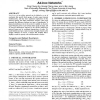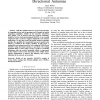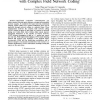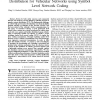124 search results - page 23 / 25 » Transmission capacity of ad hoc networks with spatial divers... |
PEWASUN
2004
ACM
13 years 10 months ago
2004
ACM
Interferences in an ad-hoc network can be defined as a set of constraints that specify which groups of nodes cannot transmit simultaneously, and they have significant implications...
INFOCOM
2003
IEEE
13 years 10 months ago
2003
IEEE
—We consider dynamic routing and power allocation for a wireless network with time-varying channels. The network consists of power constrained nodes that transmit over wireless l...
PERCOM
2006
ACM
14 years 4 months ago
2006
ACM
With the continued increase of speed and capacities of computing devices and the growing needs of people for mobile computing capabilities, Mobile ad hoc networks (MANETs) have gai...
CISS
2007
IEEE
13 years 11 months ago
2007
IEEE
Relay-based cooperative communications can achieve spatial diversity gains, enhance coverage and potentially increase capacity. If considered for large networks, traditional relayi...
JSAC
2011
13 years 7 days ago
2011
—Driven by both safety concerns and commercial interests, one of the key services offered by vehicular networks is popular content distribution (PCD). The fundamental challenges ...




